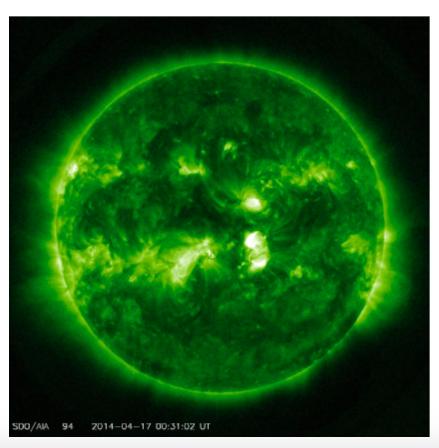
Credit: Solar Dynamic Observatory (SDO)
An international group of scientists, in cooperation with a research scientist from Skoltech, has developed a model to describe changes in solar plasma. This will help comprehend solar dynamics and gives some clues to understanding how to predict space weather events. The results have been published in the Astrophysical Journal.
Plasma β is an important quantity to investigate the interchanging roles of plasma and magnetic pressure in the solar atmosphere. It relates to both the solar magnetic field and driving solar phenomena such as solar wind, coronal mass ejections, and flares; these phenomena affect the Space Weather directly.
Dr. Jenny Rodriguez, a scientist from the Space Center of Skolkovo Institute of Science and Technology (Russia), her colleagues from Leibniz Institut für Sonnenphysik (Germany) and Instituto Nacional de Pesquisas Espaciais (Brazil) have developed a model to estimate how plasma β changes in the solar atmosphere. Specifically, they obtain a description of the plasma β in the solar corona during previous solar cycles (~22 years). They found the strongest influence during both solar cycles from faculae and the quiet Sun regions.
The faculae and QS regions drive variations in magnetic and kinetic pressure at coronal heights. It can directly affect space weather and the ability to predict it. These results give an interesting outlook on solar cycle dynamics.
“Plasma β is a very important quantity in the solar atmosphere. The solar atmosphere is a plasma physics laboratory near us; it allows us to know about its dynamics and to understand how many events are happening on the Sun. We believe that our findings will help comprehend the Sun’s dynamics and help to forecast the Space Weather,” said Dr. Jenny Rodriguez.
###
Media Contact
Alina Chernova
[email protected]
890-556-53633
Original Source
https:/
Related Journal Article
http://dx.




